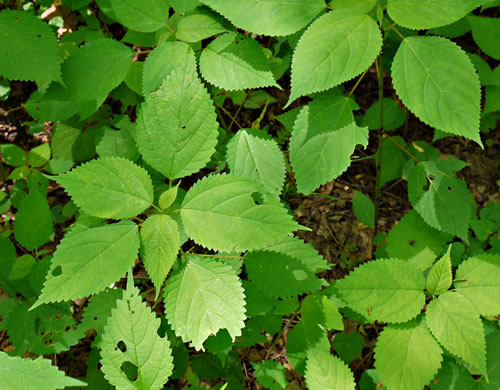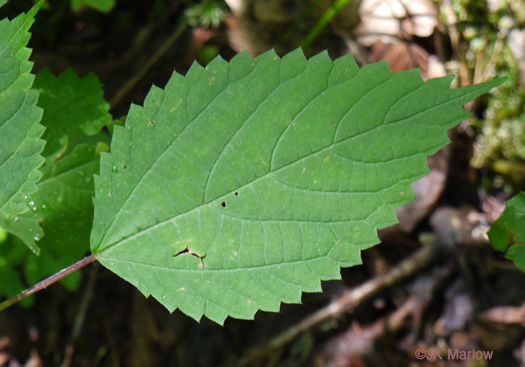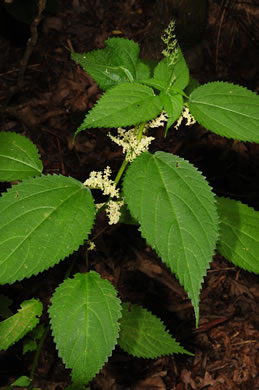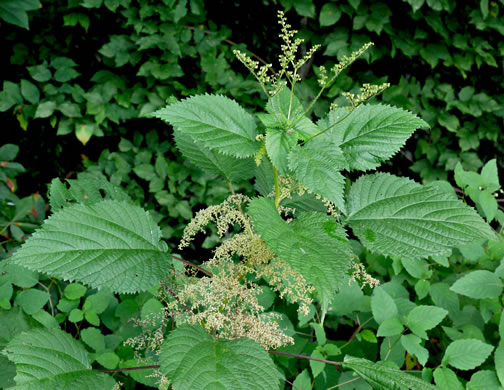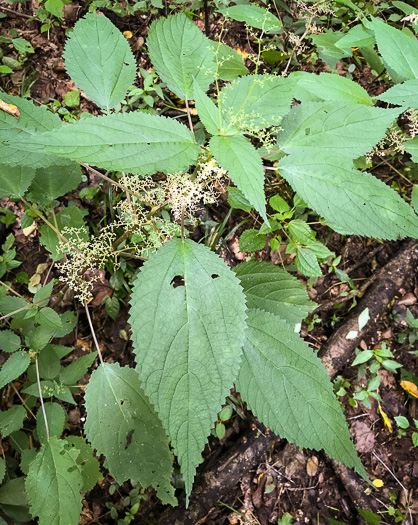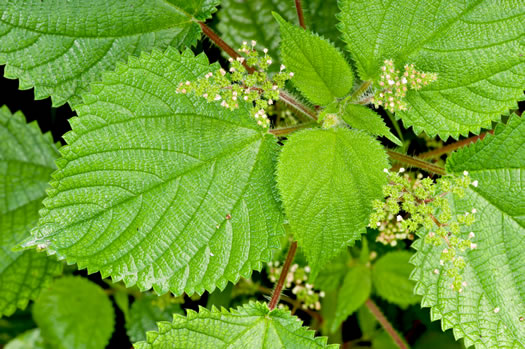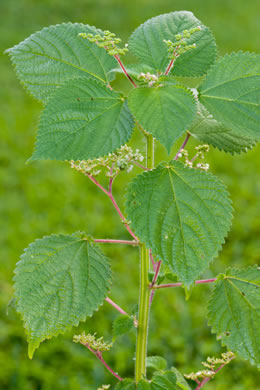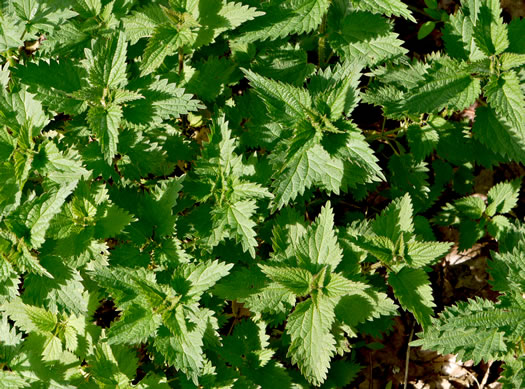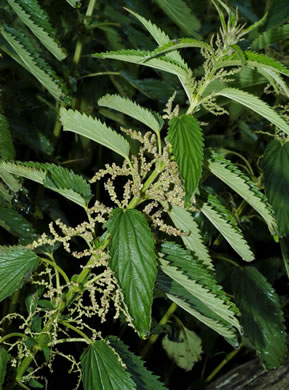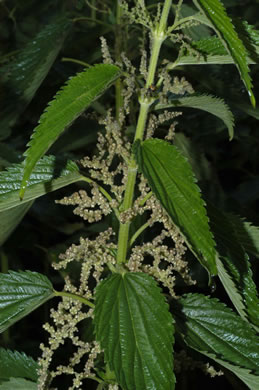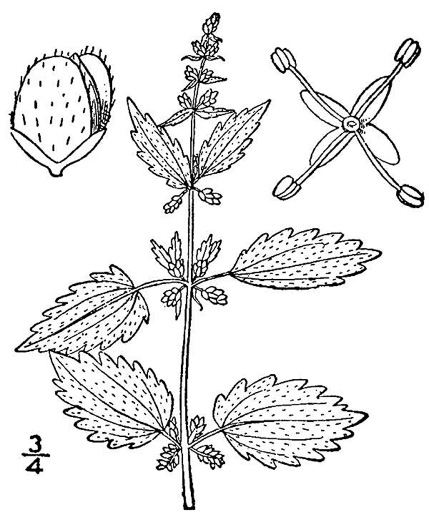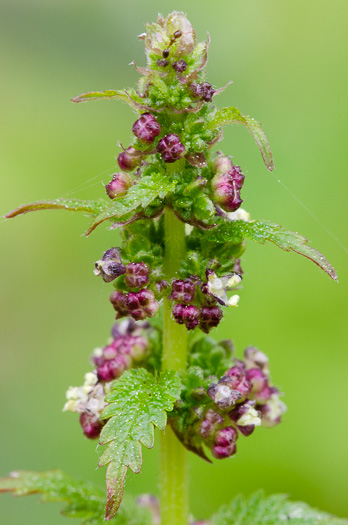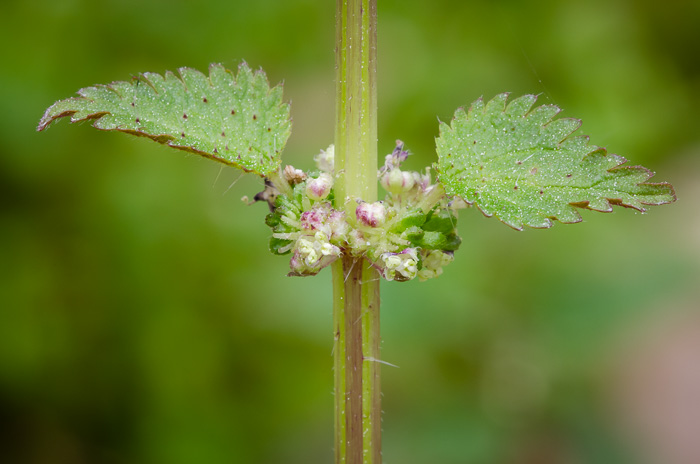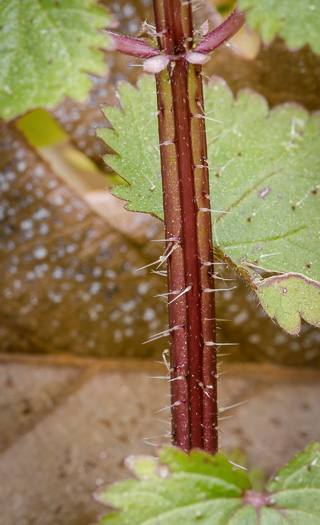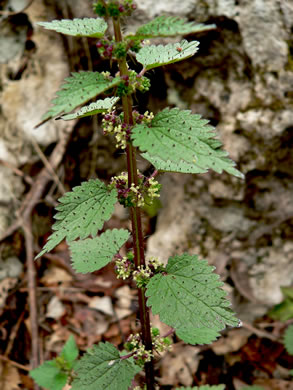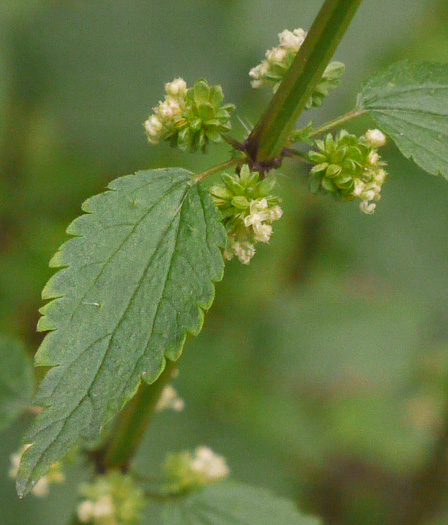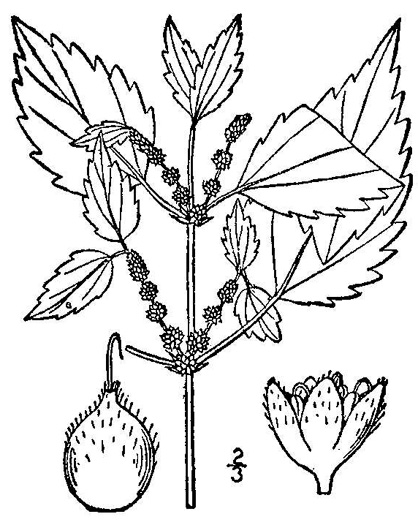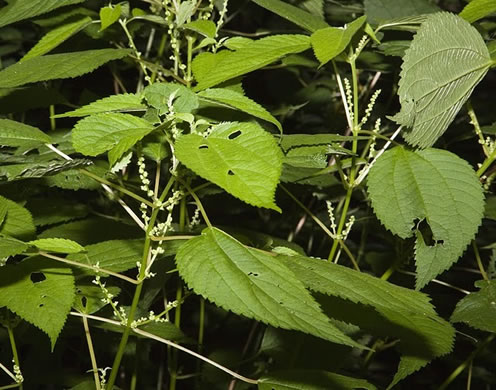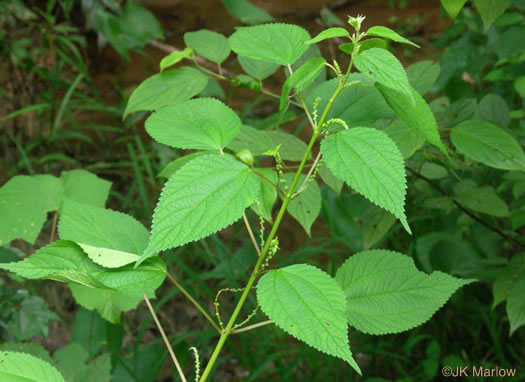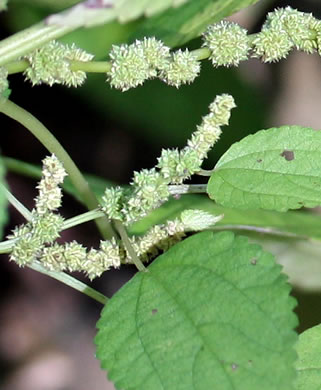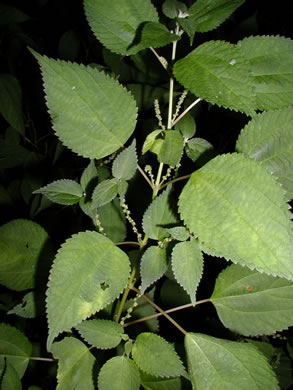Your search found 21 image(s) of False Nettle, Wood Nettle and Stinging Nettle.
To see larger pictures, click or hover over the thumbnails.
To go to the plant's detail page, click its name.
 Habitat: Moist, nutrient-rich forests, seepage swamps, especially abundant in cove forests in the Mountains and bottomlands in the Piedmont
Habitat: Moist, nutrient-rich forests, seepage swamps, especially abundant in cove forests in the Mountains and bottomlands in the Piedmont
Often forms the dominant herbaceous layer in rich cove forests by midsummer, per Wildflowers & Plant Communities of the Southern Appalachian Mountains and Piedmont (Spira, 2011).
Leaves alternate, broadly ovate, sharply toothed, 3-6" long, per Wildflowers of Tennessee (Carman, 2005).
Flowers in terminal & axillary panicles: the upper female, lower male, per Guide to the Wildflowers of SC, 1st ed. (Porcher & Rayner, 2001).
Leaves egg-shaped and coarsely toothed; stem bristly with stinging hairs, per Newcomb's Wildflower Guide (Newcomb, 1977).
 Habitat: Waste ground and agricultural areas (e.g. tree farms)
Habitat: Waste ground and agricultural areas (e.g. tree farms)
Plants with stipitate-glandular trichomes as well as stinging trichomes, per Weakley's Flora (2015).
Staminate & pistillate flwrs in same panicle, or proximal panicles staminate, per Flora of North America.
 Habitat: Bottomlands, roadsides, other disturbed areas, primarily in calcareous soils
Habitat: Bottomlands, roadsides, other disturbed areas, primarily in calcareous soils
Stems & leaf blades strongly hispid w stinging hairs (on both leaf surfaces), per Weakley's Flora.
Inflorescences usually surpassing the subtending leaf petiole, per Weakley's Flora.
 Habitat: Rich moist soil, usually on floodplains
Habitat: Rich moist soil, usually on floodplains
Staminate and pistillate flowers intermixed, sessile to short-pedunculate, per Flora of North America.
Stinging trichomes, per Vascular Flora of the Carolinas (Radford, Ahles, & Bell, 1968).
Leaf blades usually widest below middle or near base; margins serrate, per Flora of North America.
Flowers in small, often compact, nearly spherical clusters, per Vascular Flora of the Carolinas (Radford, Ahles, & Bell, 1968).
 Habitat: Swamp forests, bottomland forests, bogs, tidal marshes, other marshes, other wetlands
Habitat: Swamp forests, bottomland forests, bogs, tidal marshes, other marshes, other wetlands
Inflorescence of small compact glomerules along leafless lateral branches, per Vascular Flora of the Carolinas (Radford, Ahles, & Bell, 1968).
Tiny flowers in small headlike clusters arranged along spikes in leaf axils, per Guide to the Wildflowers of SC, 1st ed. (Porcher & Rayner, 2001).
Similar to Laportea but it lacks stinging hairs and has opposite leaves, per Wildflowers & Plant Communities of the Southern Appalachian Mountains and Piedmont (Spira, 2011).

